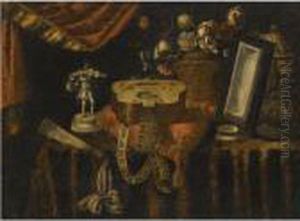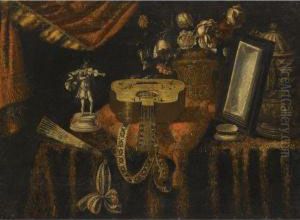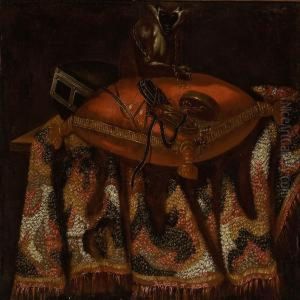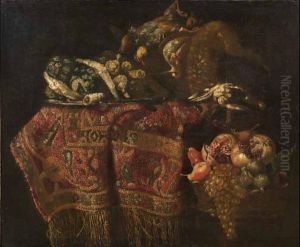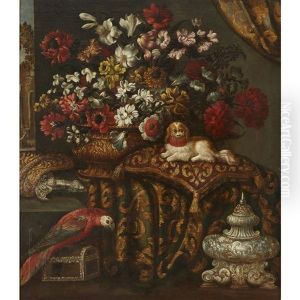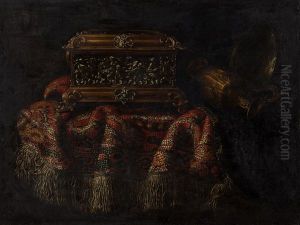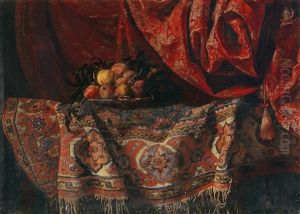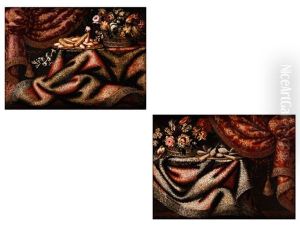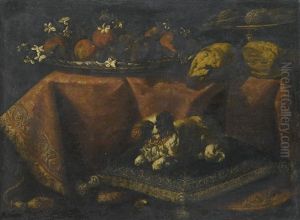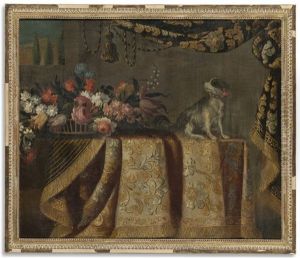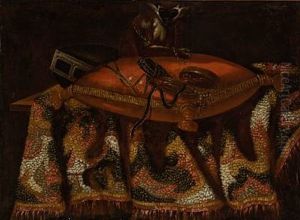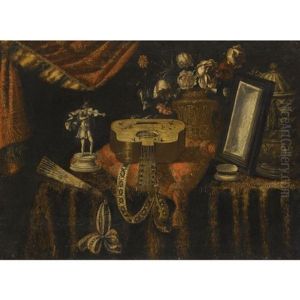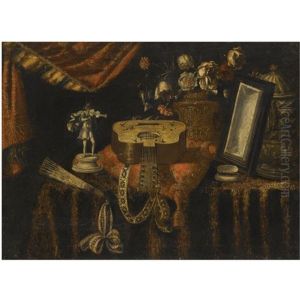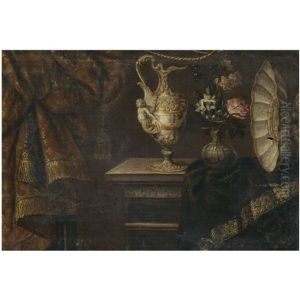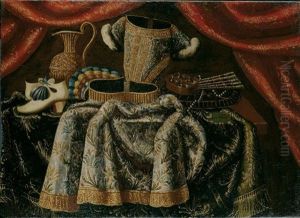Francesco Il Maltese Noletti Paintings
Francesco Noletti, known as Il Maltese due to his Maltese origin, was a Baroque painter who was active during the 17th century. Born in 1611 in Valletta, Malta, Noletti's early life and training are not thoroughly documented, but it is believed that he was initially trained in Malta. His work was greatly influenced by the Roman and Neapolitan schools of painting, which were dominant styles during his time.
Noletti moved to Rome, which was then the hub of artistic activity and innovation, as a young man. In Rome, he became known for his still life paintings, particularly those that depicted rich drapery and oriental carpets, which were highly prized by the Roman aristocracy and clergy. His work was characterized by a meticulous attention to detail, vibrant color palette, and the realistic depiction of textures, which made his paintings stand out among his contemporaries.
He was often referred to as 'Francesco Fieravino' or 'Francesco da Malta' and was particularly renowned for the way he portrayed the intricate patterns and folds of the textiles in his compositions. These still life paintings often included items such as musical instruments, books, and other objects that suggested a narrative or a symbolic meaning beyond their mere physical presence.
Noletti's clientele included prestigious figures of the time, and his works were collected by art connoisseurs across Europe. Despite his success, there is a relative scarcity of biographical details about his personal life. What is known is that his career was rather short-lived; he died prematurely in 1654 in Rome. His contributions to still life painting were significant, and he left a legacy that would influence other artists in the genre. Noletti's paintings can be found in several important collections, including the Galleria Nazionale d'Arte Antica in Rome and the Louvre Museum in Paris.
